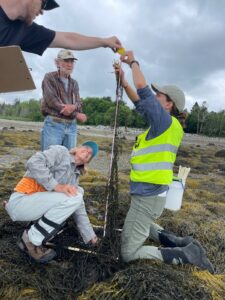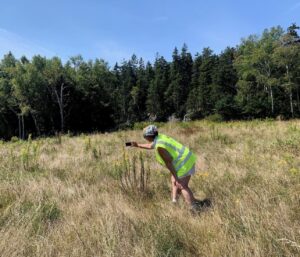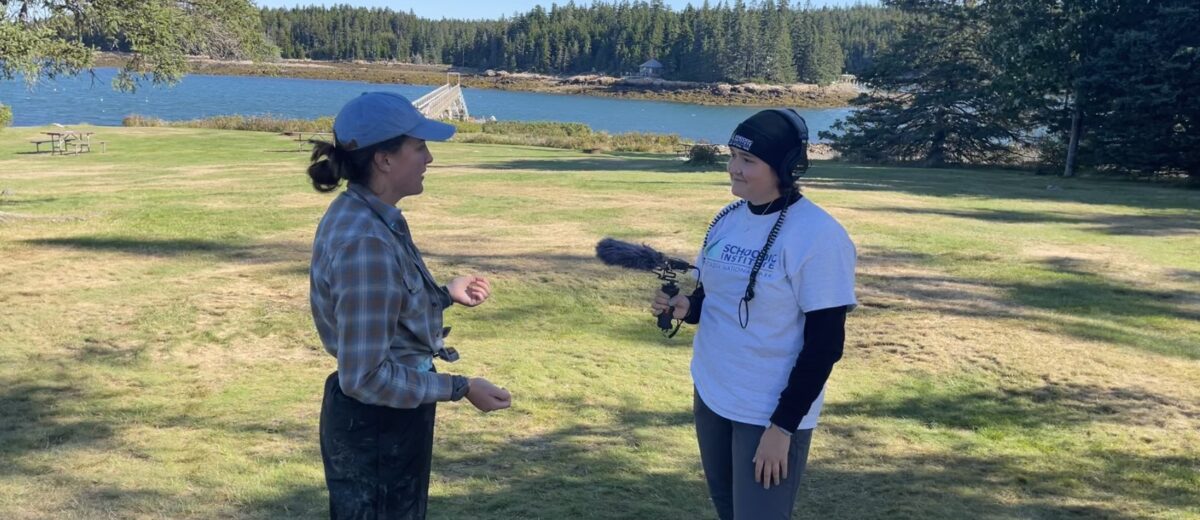by Olivia Milloway
Since coming to Acadia National Park at the beginning of the summer, my senses have yet to stop humming. Sight, as I had expected, tugs on my attention in new ways every day: the texture of the Atlantic ocean when it’s windy or the burnt-orange hue of the full moon as it rises. But smell and sound have rooted me in this place, too, even more so than sight. From the sulfurous musk of the mudflats at low tide to the ever present squawks of gulls, each smell and sound is calling out: I’m here! I’m alive! Pay attention to me!
One of my favorite sounds of Acadia: the swish of rockweed beneath our feet as we walk across an algae bed in the rocky intertidal. (In the video, someone is walking across the frame in waterproof boots. We see them from the knee down, and Mount Desert Narrows is in the background.)
As this year’s Cathy and Jim Gero Acadia Early Career Fellow in Science Communication at Schoodic Institute, it is my goal to tell the stories of Acadia with a broad audience through sharing the sensorial experiences that have demanded my attention. While I can’t (yet!) transmit smell through the internet, I can integrate sound with storytelling to transport listeners to the park, regardless of their ability to physically visit.

Choosing a story to tell
Once I had honed in on sound–and specifically, a podcast– as a method of communication, I searched for stories that would lend well to this type of storytelling. I wanted to find a story that highlighted many different voices, especially voices not often heard in science. I also wanted a story that would take me all across the park and record unique sounds in a diversity of environments, from the intertidal to the maritime forests.
With the help of science communication specialist Catherine Schmitt, I decided to focus on the citizen science projects happening in Acadia. Citizen science is the participation of non-scientists in research. While it can take many forms, here at Schoodic we use citizen science to answer questions about the changing environment around us. For the podcast, I am focusing on Project ASCO, Hawk Watch, and iNaturalist based projects that monitor biodiversity.

Finding equipment and recording in the field
I need equipment that can capture the nuances of the sound I want to capture, while not being drowned out by noises like wind, ocean, or the ever-present drone of lobster boat engines. My biggest tool is a small, handheld Zoom recorder and a shotgun microphone. Here’s an example of how it works to capture the sounds I want, and filter out the sounds I’m less interested in. In the video below, notice the sound quality difference as the video goes from audio recorded by my shotgun mic to my phone and back to my shotgun mic. The furry attachment on the microphone is a windscreen, which is a helpful tool when I’m recording by the water.
Getting to talk with both scientists and citizen scientists is the most exciting part of my job. I’ve interviewed nearly thirty people so far for the podcast, and am eager to share their insights with listeners in the upcoming podcast season.
